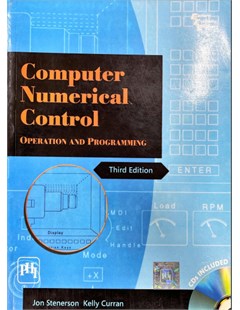Engineering Design: A Systematic Approach
Introduction: Fundamentals; Product Planning, Solution Finding and Evaluation; Product Development Process; Task Clarification; Conceptual Design; Embodiment Design; Mechanical Connections, Mechatronics and Adaptronics; Size Rangers and Modular Products; Design for Quality; Design for Mimimum Cost; Summary.
2007
Introduction: Fundamentals; Product Planning, Solution Finding and Evaluation; Product Development Process; Task Clarification; Conceptual Design; Embodiment Design; Mechanical Connections, Mechatronics and Adaptronics; Size Rangers and Modular Products; Design for Quality; Design for Mimimum Cost; Summary.
Engineering design must be carefully planned and systematically executed. In particular, engineering design methods must integrate the many different aspects of designing and the priorities of the end-user.
Engineering Design (3rd edition) describes a systematic approach to engineering design. The authors argue that such an approach, applied flexibly and adapted to a particular task, is essential for successful product development. The design process is first broken down into phases and then into distinct steps, each with its own working methods. The third edition of this internationally-recognised text is enhanced with new perspectives and the latest thinking. These include extended treatment of product planning; new sections on organisation structures, simultaneous engineering, leadership and team behaviour; and updated chapters on quality methods and estimating costs. New examples have been added and existing ones extended, with additions on design to minimise wear, design for recycling, mechanical connections, mechatronics, and adaptronics.
Engineering Design (3rd edition) is translated and edited from the sixth German edition by Ken Wallace, Professor of Engineering Design at the University of Cambridge, and Luciënne Blessing, Professor of Engineering Design and Methodology at the Technical University of Berlin.
Topics covered include:
+ fundamentals;
+ product planning and product development;
+ task clarification and conceptual design;
+ embodiment design rules, principles and guidelines;
+ mechanical connections, mechatronics and adaptronics;
+ size ranges and modular products;
+ quality methods; and
+ cost estimation methods.
The book provides a comprehensive guide to successful product development for practising designers, students, and design educators. Fundamentals are emphasised throughout and short-term trends avoided; so the approach described provides a sound basis for design courses that help students move quickly and effectively into design practice.
Engineering Design is widely acknowledged to be the most complete available treatise on systematic design methods. In it, each step of the engineering design process and associated best practices are documented. The book has particularly strong sections on design from the functional perspective and on the phase of the process between conceptual and detail design in which most key design decisions are made. The 3rd edition includes new material on project planning and scheduling. Anyone committed to understanding the design process should be familiar with the contents of this book.
Warren Seering, Weber-Shaughness Professor of Mechanical Engineering, Massachusetts Institute of Technology
G. Pahl, W; Beitz, J. Feldhusen. Engineering Design: A Systematic Approach. Springer, 2007.
Ngành CÔNG NGHỆ KỸ THUẬT CƠ ĐIỆN TỬ (7510203)
 |  |  |
| Computer numerical control: Operation and programming | Mobile Robots: Navigation, Control and Sensing Surface Robots and AUVs |
Thứ Tư, 15:41 09/02/2022
Copyright © 2018 Hanoi University of Industry.